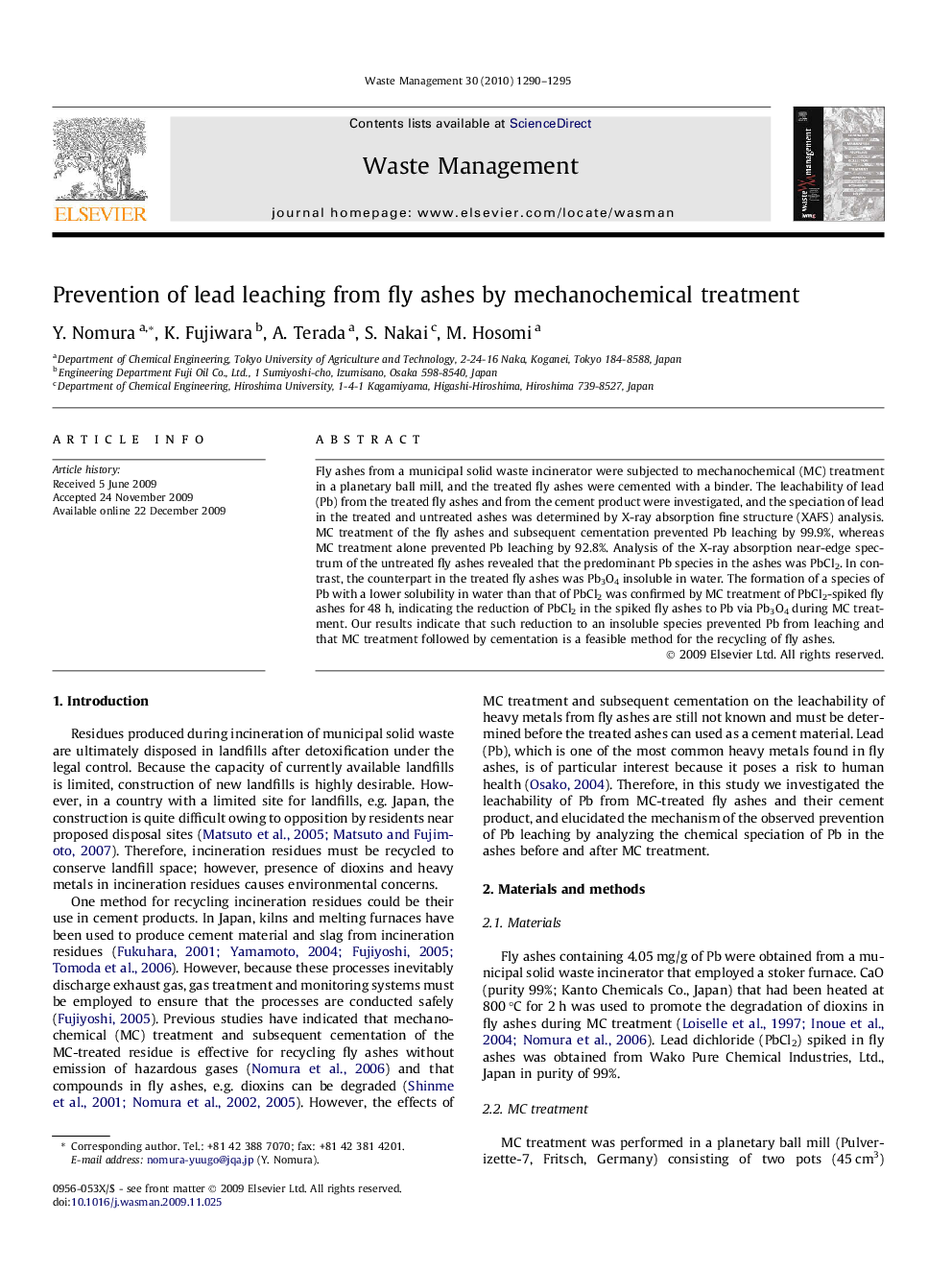| Article ID | Journal | Published Year | Pages | File Type |
|---|---|---|---|---|
| 4472770 | Waste Management | 2010 | 6 Pages |
Fly ashes from a municipal solid waste incinerator were subjected to mechanochemical (MC) treatment in a planetary ball mill, and the treated fly ashes were cemented with a binder. The leachability of lead (Pb) from the treated fly ashes and from the cement product were investigated, and the speciation of lead in the treated and untreated ashes was determined by X-ray absorption fine structure (XAFS) analysis. MC treatment of the fly ashes and subsequent cementation prevented Pb leaching by 99.9%, whereas MC treatment alone prevented Pb leaching by 92.8%. Analysis of the X-ray absorption near-edge spectrum of the untreated fly ashes revealed that the predominant Pb species in the ashes was PbCl2. In contrast, the counterpart in the treated fly ashes was Pb3O4 insoluble in water. The formation of a species of Pb with a lower solubility in water than that of PbCl2 was confirmed by MC treatment of PbCl2-spiked fly ashes for 48 h, indicating the reduction of PbCl2 in the spiked fly ashes to Pb via Pb3O4 during MC treatment. Our results indicate that such reduction to an insoluble species prevented Pb from leaching and that MC treatment followed by cementation is a feasible method for the recycling of fly ashes.
